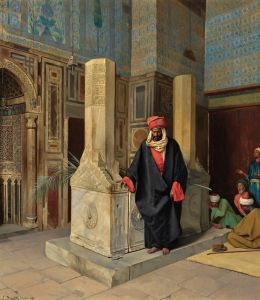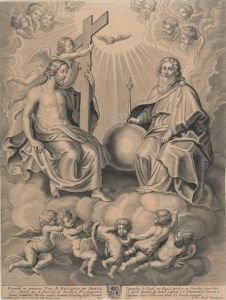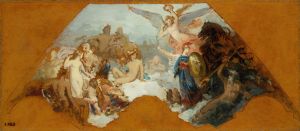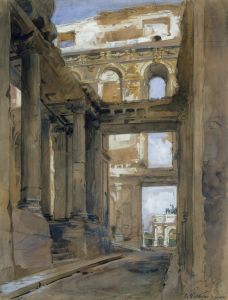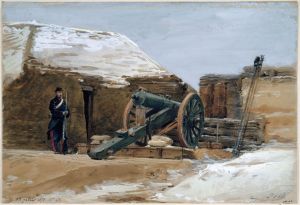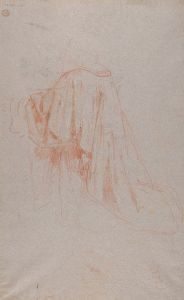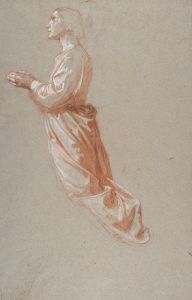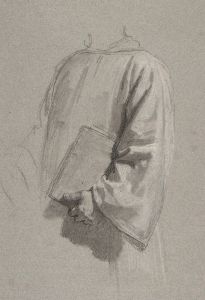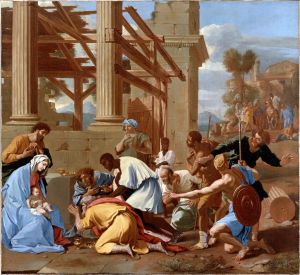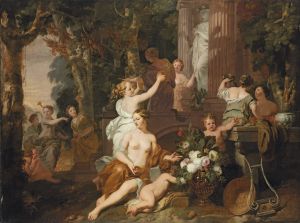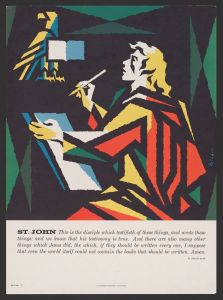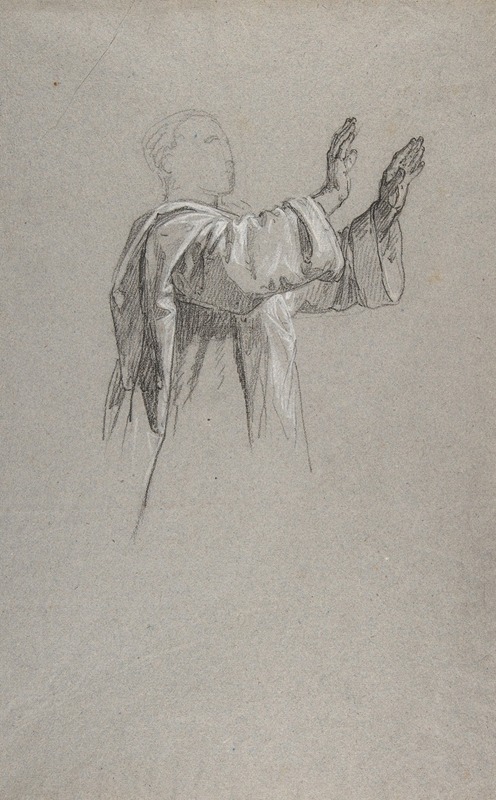
Cleric with Raised Arms
A hand-painted replica of Isidore Pils’s masterpiece Cleric with Raised Arms, meticulously crafted by professional artists to capture the true essence of the original. Each piece is created with museum-quality canvas and rare mineral pigments, carefully painted by experienced artists with delicate brushstrokes and rich, layered colors to perfectly recreate the texture of the original artwork. Unlike machine-printed reproductions, this hand-painted version brings the painting to life, infused with the artist’s emotions and skill in every stroke. Whether for personal collection or home decoration, it instantly elevates the artistic atmosphere of any space.
Isidore Pils, a prominent French painter of the 19th century, is known for his historical and religious compositions. One of his notable works is "Cleric with Raised Arms," which exemplifies his skill in capturing dramatic and emotional scenes. Pils was born on July 19, 1813, in Paris, and he studied under François-Édouard Picot at the École des Beaux-Arts. He gained recognition early in his career, winning the prestigious Prix de Rome in 1838 for his painting "Saint Peter Healing a Lame Man at the Door of the Temple."
"Cleric with Raised Arms" is a testament to Pils' ability to convey religious fervor and human emotion through his art. The painting depicts a cleric, possibly a priest or a monk, with his arms raised in a gesture that suggests prayer, supplication, or perhaps a call to the divine. The figure is rendered with meticulous attention to detail, showcasing Pils' academic training and his mastery of the human form.
The composition of the painting is carefully balanced, with the cleric positioned centrally, drawing the viewer's eye to his expressive gesture. The background is typically subdued, allowing the figure to stand out prominently. Pils often employed a realistic style, and this work is no exception, with the cleric's robes and facial features depicted with precision and care.
Pils' work often reflected the religious and historical themes that were popular in 19th-century France. During this period, there was a resurgence of interest in religious art, partly as a reaction to the secularization of society following the French Revolution. Artists like Pils played a role in this revival, creating works that were both devotional and educational.
Throughout his career, Pils received numerous commissions for religious and historical paintings. He was also involved in significant public projects, such as the decoration of the Church of Saint Vincent de Paul in Paris and the staircase of the Opéra Garnier. His ability to convey narrative and emotion made him a sought-after artist for both public and private commissions.
"Cleric with Raised Arms" fits within this context of Pils' oeuvre, showcasing his dedication to religious themes and his skill in creating compelling visual narratives. The painting is a fine example of how Pils combined technical proficiency with a deep understanding of his subject matter, resulting in works that resonate with viewers on both an aesthetic and emotional level.
Isidore Pils passed away on September 3, 1875, in Douarnenez, France. His legacy is preserved through his numerous works, which continue to be studied and appreciated for their contribution to 19th-century French art. "Cleric with Raised Arms" remains a significant piece within his body of work, reflecting the religious and historical interests that defined much of his career.





